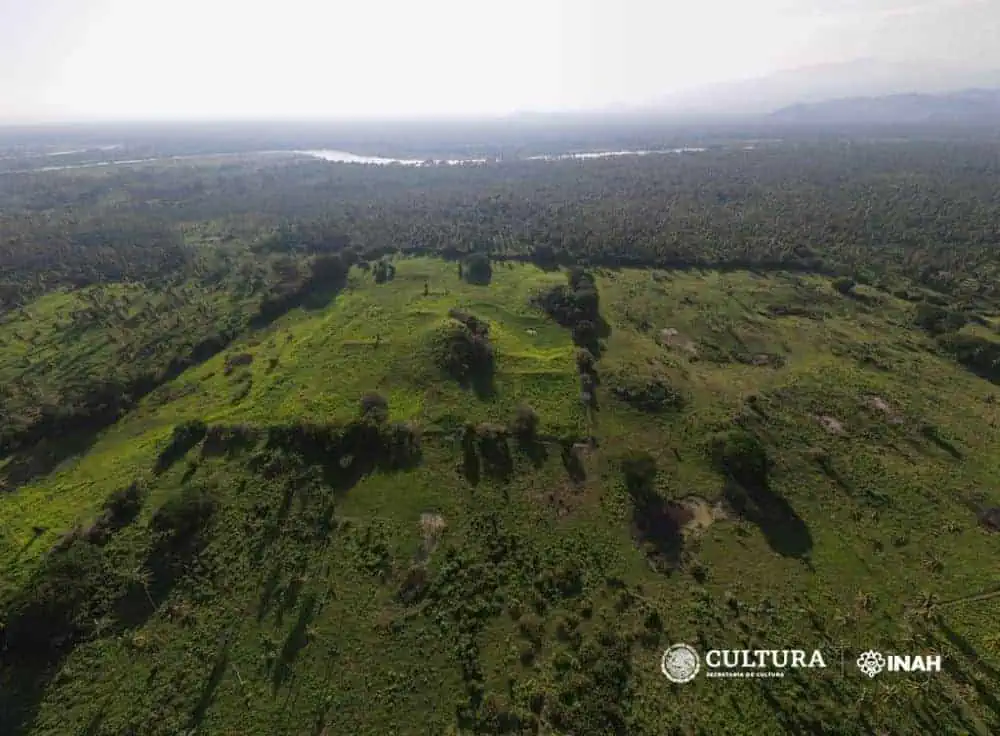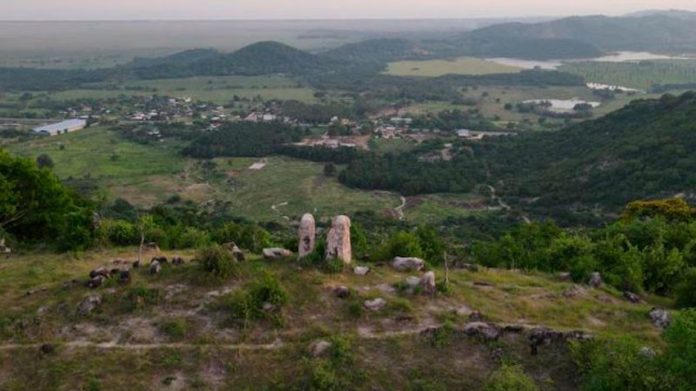An archeological site believed to be the important Aztec settlement of Apancalecan has been discovered in the Costa Grande region of the state of Guerrero, about 100 km north of Acapulco, announced archaeologists from the National Institute of Anthropology and History (INAH) this week.
Until now, Apancalecan was known only through references in codices — pictorial manuscripts that recorded the pre-Hispanic history of Mexico. Apancalecan’s name in Nahua means “place of the houses with water channels,” and it is referred to as a “main town” or “head town” in the Matrícula de Tributos codex of the early 1500s.

The site in the El Cerrito community of Tecpan de Galeana — not far from the highway that connects Zihuatanejo and Acapulco — includes one large mound and “26 minor mounds … such as altars and elongated structures in a good state of conservation … as well as residential areas and ball-playing fields,” INAH noted in its Tuesday press release.
Located 850 meters from the Tecpan River and 1 km from the Tetitlán Lagoon, the complex also includes “deep holes … possibly associated with water storage and dams,” according to anthropologist Rodolfo Lobato Rodríguez.
Lobato is the head of the museum at a similar archeological zone, officials said — Soledad de Maciel-Xihuacan — near the town of Petatlán, Guerrero.
Lobato coordinated the work at the site during a three-day surface tour in June, logging it at 29 hectares (about 71 acres). He and representatives from INAH’s Guerrero center arrived after local residents informed officials of the existence of what seemed to be pre-Hispanic mounds.

According to INAH, the preliminary survey revealed one large mound standing 25 meters (82 feet) tall with a base of 73.5 meters (241 feet) by 60 meters (about 197 feet), with adjacent spaces such as squares. The 26 smaller mounds surround the large one.
A rocky outcrop with carved pools was also recorded, and the site contains channeling systems and complex internal dams, said INAH, who said it will continue to investigate the site.
Apancalecan appears in The Matrícula de Tributos codex, which names the main towns that made up the province of Cihuatlán, established after the conquest of the region by the Mexica (1497–1502), INAH said.
Lobato said, “Due to the characteristics of the ceramic material recovered on the surface — among which Teotihuacán-style ring supports stand out — we think that the site was inhabited from the Classic period (A.D. 200–650), being [a] contemporary of Cihuatlán, another important settlement on the Costa Grande of Guerrero, and that [Apancalecan] continued until the Late Postclassic (A.D. 1200–1521).”
The find is another part of the archaeological puzzle of the Costa Grande, whose pieces have been fitting together in the last three decades and have revealed 1,300 years of development.
A perimeter will be set up around the area to guarantee its protection.
CORRECTION: The original version of this article contained a photo from the archaeological site of Xochicalco that misidentified it as being from the ruins of Teotihuacán.
With reports from INAH and La Jornada
